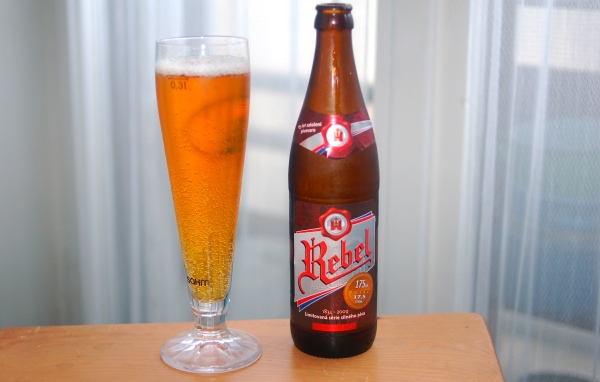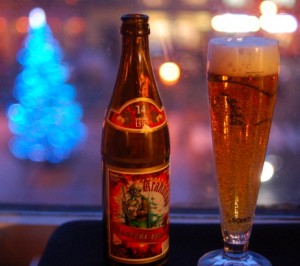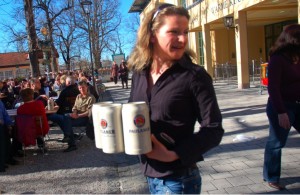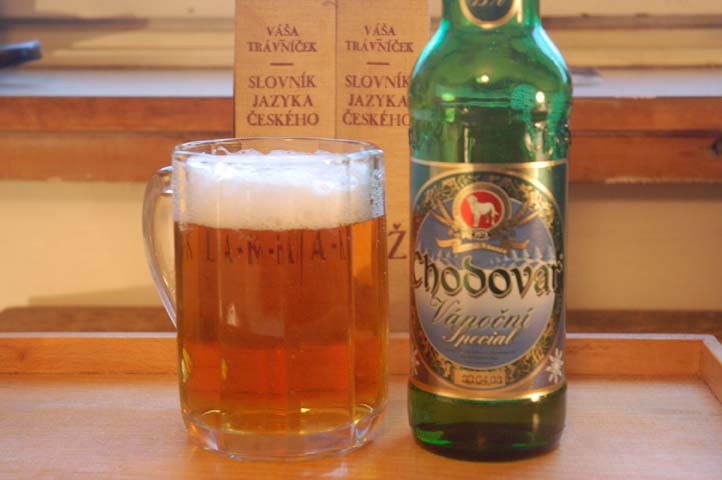
Just a quick post on the wonderful city-owned Pivovar Primátor, which I mentioned a couple of days ago in my contrarian take on Budvar as a good example of an innovative brewery outside the private sector. Last night Primátor held a tasting at Prague’s Pivovarský klub, showing off its full line of beers (pictured above with deservedly happy brewmaster Pavel Kořínek). Although all the beers were worth trying before, last night at least a couple gave the impression of having improved considerably.
To start, Primátor’s excellent 13° polotmavý (5.5% ABV) seemed much sweeter and more richly caramel-flavored than I remembered, well-worth its award for SPP’s semi-dark beer of the year for 2006.
And Primátor’s unusual strong lager, the 24° Double (10.5% ABV), seemed to have a fuller, stickier mouthfeel than before, followed by more lush notes of maple syrup, toasty malt and with a bright, peppermint-like hoppy spike in the finish. This is a deep amber lager, brewed from a mix of Bavarian and caramel malt and a small wheat adjunct, and it’s recommended as much as an ingredient in the kitchen as a beverage on the table. (A slice of bůček, or pork belly, glazed with 24° Double could be an absolute dream.) I’m not sure I prefer it to Březňák’s Doppel-Doppel-Bock, but it’s close.
As he introduced the beers, Mr. Kořínek explained a bit more about the offerings from the brewery.
Read More


 Not all Czech Christmas beers are strong amber monsters like the holy brew sanctified at Klášterní Pivovar Strahov’s
Not all Czech Christmas beers are strong amber monsters like the holy brew sanctified at Klášterní Pivovar Strahov’s 






